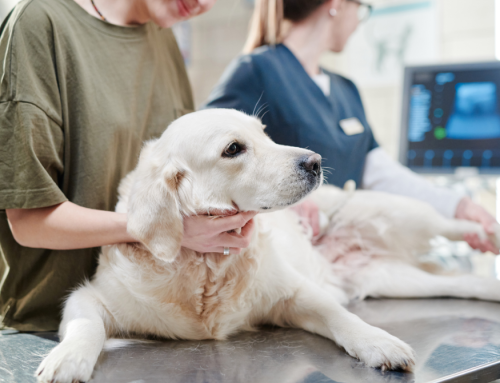featuring Stacy Gentry | Blue Heron Consulting
In today’s world, where strong connections are vital, building meaningful relationships with your clients is essential for long-term success. This webinar focuses on helping you create authentic connections that go beyond routine transactions. We delve into the pivotal relationship between the client experience and the long-term loyalty it fosters with your hospital. This comprehensive program offers practical insights and actionable strategies that will empower you to cultivate stronger, more impactful client relationships. Whether you’re looking to refine your current approach or adopt new techniques, this webinar will provide the tools you need to elevate your client care.
Building strong client relationships is at the heart of a successful veterinary practice. In a recent session, Stacy Gentry, an Operational Coach at Blue Heron Consulting, shared valuable insights on how veterinary teams can enhance client retention and satisfaction. This blog post outlines the essential strategies discussed in the video, including understanding client needs, gathering and acting on feedback, and optimizing operational efficiency.
Understanding What Clients Really Want
One of the most common misconceptions in veterinary medicine is the assumption that clients prioritize quality medical care above all else. While this is undoubtedly important, surveys indicate that clients value speed, convenience, friendly service, and helpful employees just as much—if not more.
To improve client relationships, veterinary teams must proactively seek and understand client expectations. Here’s how:
- Surveys: Use communication platforms to routinely collect client feedback.
- Online Reviews: Monitor social media and online review sites to understand common client concerns and praises.
- Website Analytics: Track the most visited pages on your website to identify service areas that are most in demand.
- Team Insights: Front desk staff and technicians hear valuable client feedback daily—train them to recognize and report patterns.
However, collecting feedback isn’t enough—acting on it strategically is essential.
Shifting from Defensiveness to Curiosity
Veterinary teams often face feedback that feels critical, such as complaints about pricing. Instead of getting defensive, Stacy encourages teams to approach feedback with curiosity. Ask:
- Is this feedback based on a misunderstanding of value?
- Does this highlight a real operational issue?
- Does it align with our hospital’s mission and values?
Not all feedback should dictate changes, but identifying common trends can highlight opportunities for growth.
Improving the Client Experience: Before, During, and After the Visit
Before the Visit: Convenience is Key
Clients have busy lives, and their biggest frustration is often scheduling and accessibility. Veterinary hospitals can enhance convenience with:
- Online Scheduling: Systems like Vetstoria and Weave allow clients to book at their convenience.
- Same-Day Appointments: Designating urgent-care slots in your schedule prevents frustration for clients with last-minute needs.
- Forms in Advance: Sending patient history or pre-visit forms ahead of time reduces time spent at check-in.
During the Visit: Speed, Communication, and Special Accommodations
To create a seamless client experience:
- Have a structured pre-visit process: Review records, anticipate client concerns, and have necessary tools ready to avoid room-to-room delays.
- Offer clear financial discussions: Studies show 52% of pet owners prefer cost discussions in real-time rather than being surprised by their bill.
- Use open-ended questions: Instead of a simple “any concerns today?”, ask “What else is going on with [pet’s name]?” to ensure all issues are addressed.
- Create special accommodations: Some pets and clients have unique needs—whether it’s a large dog uncomfortable in exam rooms or a client with mobility challenges, preparing in advance shows thoughtfulness and care.
After the Visit: Closing the Loop
The end of the visit is a critical moment—it determines whether a client leaves feeling confident or frustrated. Steps to optimize post-visit experience include:
- Efficient Checkout: Ensure invoices are prepared in advance so clients don’t wait unnecessarily.
- Clear Client Education: Clients retain only 10% of verbal explanations. Sending digital resources or printed summaries improves compliance and trust.
- Follow-Up Communication: Callbacks and post-visit surveys reinforce a client’s value and allow further refinement of the hospital’s service.
Final Thoughts: Prioritizing Consistency Over Perfection
Veterinary teams often feel pressure to “go above and beyond” for every client interaction. However, Stacy emphasizes that consistency is far more valuable. Clients don’t expect grand gestures every time—they expect reliable, friendly, and professional service at every visit.
By refining operational efficiency, enhancing communication, and maintaining a client-first mindset, veterinary hospitals can build lasting, loyal client relationships that drive long-term success.






